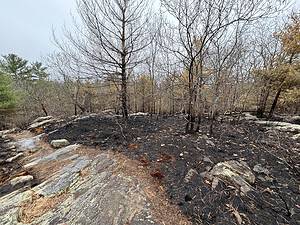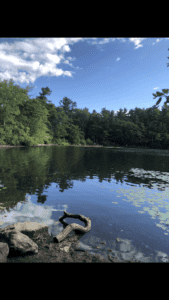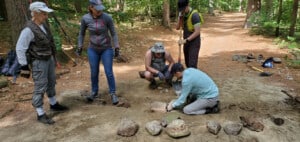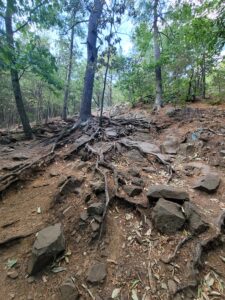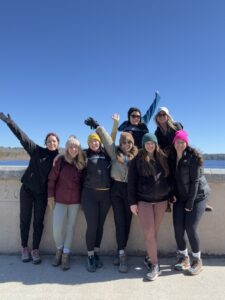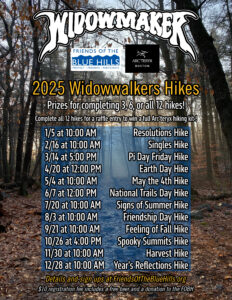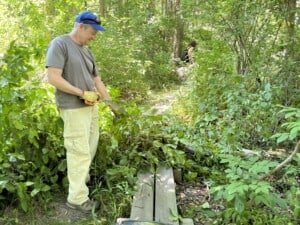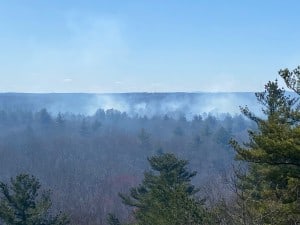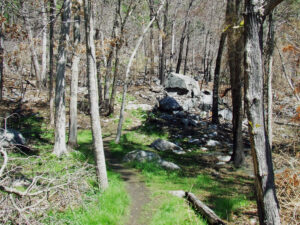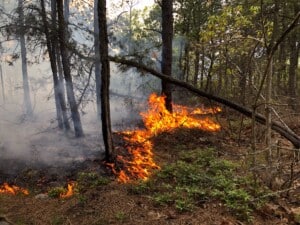By Jim Briand
A massive construction project in the Blue Hills as well as arguments about national security and boosting the local economy used to justify destroying wetlands, recreational resources and wildlife habitat.
That might remind you of the fairly recent construction project at Blue Hills Reservoir which destroyed eight acres of wetlands. And you might think we’re talking about the controversial decision several years ago to allow the construction of a three-acre private parking lot on Blue Hills Reservation land in Randolph. We’re talking about the same story, only half a century earlier.
We are talking about March 1955 when the Massachusetts Commissioner of Public Works, 47-year old John Volpe, proposed a plan for the new Route 128. Volpe confidently asserted, “In my opinion and also the opinion of nationally respected experts…the completion of the Central Artery will be the best thing that has happened to Boston in the last century.” On July 15, 1954 he laid out his vision for the path of the road at a public hearing. He expected no opposition and encouraged none.
For eight months things remained quiet and planning proceeded. Then on March 2nd, 1955 State Representative Harold Putnam of Needham raised an alarm. On March 3rd, 1955 Volpe was conducting a public hearing on an unrelated matter and Harold Putnam seized control of the agenda. Before a hushed crowd he declared that Volpe’s plan to take 750 acres of reservation land for the highway would be “the ruin of the Blue Hills,” and demanded that a new route be found. “This land is priceless and irreplaceable,” said Putnam. “It brings joy to thousands of people seeking relaxation from bustling city life.”
In the intervening days debate raged on the front pages and editorial sections of the region’s many newspapers of The Boston Globe, The Herald and the Post, and the Quincy Patriot Ledger. Putnam charged Volpe and the DPW with a cover-up of viable alternative routes. A week later, on March 10th 1955, more than 250 people packed a small Canton hearing room. Volpe led off. “The proposed route will not destroy the Blue Hills, he said, it will make it more accessible and safer to use,” he said. In fact, “a great many more will enjoy its beauty by driving through than ever used it in the past.”
Putnam stood to respond. “Commissioner Volpe’s plan, he stated, represents nothing less than the wanton and reckless sabotage of the public domain. We must preserve the Reservation. Boston is the second most congested metropolitan area in the nation. This recreational land will be more highly prized in the future. A good alternative route has been proposed. Anyone who loves the Blue Hills should join me.”
Businessmen from Randolph and Quincy opposed the alternative route, however, charging that it would dissect their towns and not only hurt business, but pose ‘a threat to security in the event of Russian nuclear attack.”
At the end of the evening passions remained high and the issue remained unresolved. Yet no one had illusions about the ultimate outcome. John Volpe was both judge and jury, and barring extraordinary political intervention, his mind was made up.
A week after the hearing, a local Wollaston man, Arthur C. Wesley wrote to the Patriot Ledger: “This highway is a foot in the door. Then will come bypasses and new connecting links, the noise and stench of fast diesel trucks. It will no longer be a bird sanctuary, no more will it be a study of nature and then it will be too late.”
As we know now, the highway did pave the way for other roads through the land. But luckily, we still have much to enjoy. This year, may we heed Wesley’s warnings and renew our effort to protect the Reservation for future generations.
Jim Briand is a member and volunteer of the Friends of the Blue Hills. In addition to writing about the history of the Blue Hills, he is also helping to organize the Friends of the Blue Hills upcoming Blue Hills Winter Festival and Chili Cook-off.

